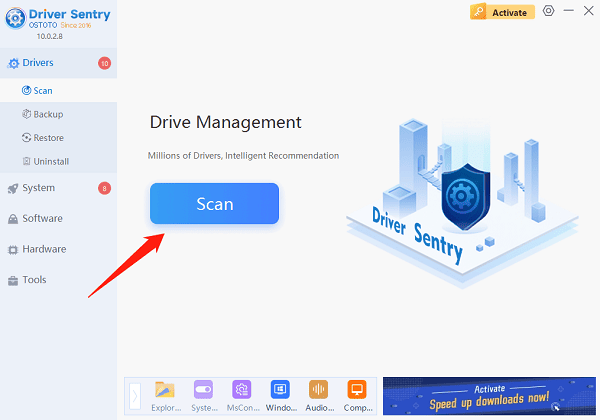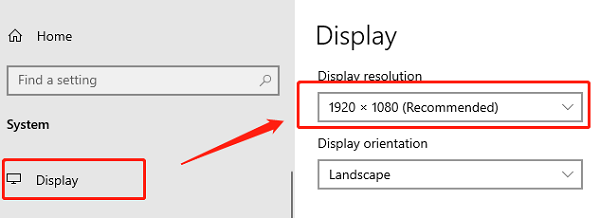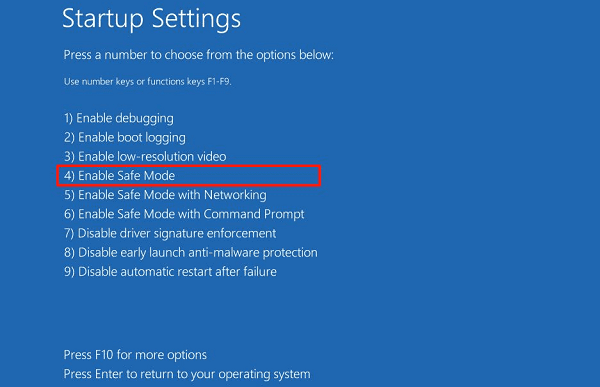
Some Windows 10 users may face screen resolution issues that are unadjustable, incorrect, or blurry. This article provides solutions to help restore optimal display quality.
1. Check Monitor Connection
Ensure the monitor cable (e.g., HDMI, VGA, DisplayPort) is securely connected to both the computer and the monitor.
If possible, try using a different cable to rule out any cable damage.
If both your monitor and computer support multiple ports (such as HDMI and DisplayPort), try switching ports to eliminate port-related issues.
2. Update Graphics Driver
Outdated or incompatible graphics drivers are one of the main causes of resolution issues, and updating the driver can help prevent this problem. Using Driver Sentry to automatically detect and update drivers can save time and avoid potential errors.
Download the latest version of Driver Sentry, install, and open the software. Click "Scan".

After the scan, locate the graphics driver in the results and click "Upgrade".
Restart your computer to ensure the new driver is active.
3. Adjust Screen Resolution Settings
Right-click on the desktop and select "Display Settings".
In the "Display Resolution" dropdown, select the recommended resolution, usually labeled as "(Recommended)".

After clicking "Apply", the system will preview the new resolution; confirm if the settings are suitable.
4. Check Monitor Refresh Rate
In the "Display Settings" window, click on "Advanced Display Settings".
Click on the "Display Adapter Properties" link, then go to the "Monitor" tab to see refresh rate options.
Select a refresh rate that matches your monitor's specifications (typically 60Hz or higher).

Apply the changes and check if the monitor displays correctly.
5. Check Application-Specific Settings
Open any applications that may be causing display issues (such as games or graphic editing software), then go to their settings menu.
Locate the resolution and display settings and match them to the system resolution.
Disable advanced graphic options such as V-Sync and anti-aliasing to avoid display conflicts.
Save the changes and check if this resolves the issue.
6. Try Resetting Display Settings
Right-click on the desktop, select "Display Settings".
If multiple display options have been changed, try resetting the resolution, scaling, and orientation settings to their default values.
Restart the computer to apply these changes and check if the screen resolution is back to normal.
7. Troubleshoot in Safe Mode
Restart the computer, pressing F8 during boot-up (or select "Startup Settings" in the Windows recovery menu).
In the startup settings menu, select "Enable Safe Mode".

Once in Safe Mode, check the resolution and refresh rate settings to confirm the monitor displays correctly in basic mode.
Afterward, restart in normal mode and see if the issue is resolved.
8. Update Windows System
Click "Start" > "Settings" > "Update & Security" > "Windows Update".
Click "Check for Updates", and if any are available, download and install them.
After updates are installed, restart your computer to apply the latest patches and updates, then check if the display issue is resolved.
9. Check Hardware Compatibility
Ensure that your graphics card is compatible with your monitor and system version, especially if using a new monitor.
If possible, connect the computer to a different monitor to see if the same problem persists.
Verify that the graphics card's output resolution and refresh rate can support the monitor's resolution requirements.
Following these steps can help you troubleshoot and fix screen resolution issues in Windows. If problems continue, consult professional support for hardware or driver diagnostics.
See also:
How to Fix Laptop WiFi Connection Issues